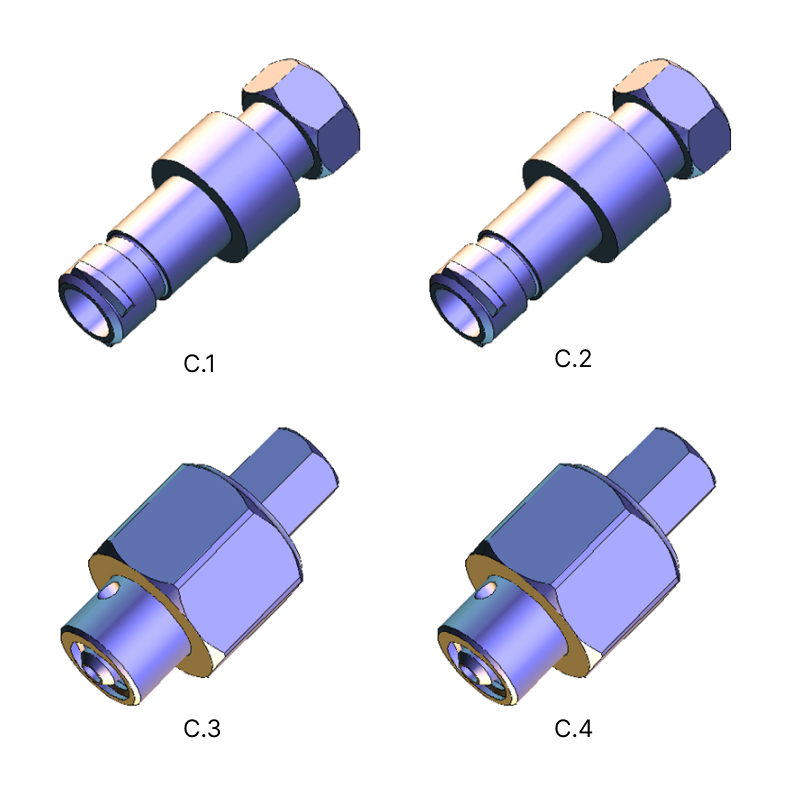

- Home
- ABOUT US
- PRACTICES
- QMS & REGULATORY SERVICES
- Design, DEVELOPMENT & TESTING
- MANUFACTURING
- CAREER
- Contact


ISO 80369-7
Hypodermic & Intravascular Reference
Connectors By Medzus
Small-bore connectors for liquids and gases in healthcare applications
Part 1: General requirements.
Scope: This part outlines the general requirements for small-bore connectors used for medical devices, applicable to all types of small-bore connectors in healthcare. It covers performance, testing, and general design aspects like dimensional requirements, safety, and preventing misconnection.
Small-bore connectors for liquids and gases in healthcare applications
Part 2: Connectors for respiratory applications
Scope: This standard specifies the requirements for connectors used in respiratory applications, such as those for ventilators, anesthesia machines, and oxygen delivery systems. The goal is to prevent misconnection with other systems, like enteral or intravenous (IV) devices.
Purpose: Ensures connectors for respiratory applications can only connect to compatible devices designed for breathing and respiratory support.
Small-bore connectors for liquids and gases in healthcare applications
Part 3: Connectors for enteral applications.
Scope: ISO 80369-3 specifies connectors used for enteral applications, such as feeding tubes, syringes for nutrition delivery, and pumps. These devices are used for the administration of enteral nutrition, medications, and fluids directly into the gastrointestinal tract.
Purpose: The goal is to ensure that enteral feeding connectors cannot be mistakenly connected to other types of medical devices (such as IV lines or respiratory devices), preventing life-threatening errors.
Small-bore connectors for liquids and gases in healthcare applications
Part 4: Connectors for urological applications.
Scope: This part applies to small-bore connectors for urological applications, which include systems used for draining and irrigating the urinary tract. Examples include catheters, drainage bags, and irrigation systems.
Purpose: Similar to other parts of ISO 80369, this standard ensures that the connectors for urological devices can only be connected to systems designed specifically for urinary applications, avoiding any dangerous misconnections.
Small-bore connectors for liquids and gases in healthcare applications
Part 5: Connectors for transfusion applications
Scope: This standard defines the connectors used in transfusion applications, such as blood bags, blood filters, and related systems. It is crucial for ensuring that transfusion-related connectors cannot be mistakenly used with devices designed for other purposes.
Purpose: The aim is to prevent the incorrect connection of blood transfusion devices with systems that could potentially introduce air, incompatible fluids, or contamination.
Small-bore connectors for liquids and gases in healthcare applications
Part 6: Connectors for neuraxial applications.
Scope: This part of the ISO 80369 standard addresses connectors used in neuraxial systems, which are involved in delivering anesthetics, analgesics, or other substances to the spinal cord or the epidural space.
Purpose: The standard ensures that these specific connectors cannot be inadvertently connected to systems used for other applications, reducing the risk of serious misconnection errors.
Small-bore connectors for liquids and gases in healthcare applications
Part 7: Connectors for intravascular systems
Scope: This part focuses on connectors used in intravenous (IV) systems, which are vital for administering fluids, medications, or blood products directly into a patient's bloodstream.
Purpose: It ensures that connectors for IV applications are designed to prevent their misconnection with other non-IV systems (such as enteral or respiratory systems), which could lead to life-threatening errors.
ISO 80369-2 Respiratory applications
(e.g., ventilators, anesthesia).
ISO 80369-4 Urological applications
(e.g., catheters, drainage systems).
ISO 80369-6 Neuraxial (spinal) applications
(e.g., epidural anesthesia).
ISO 80369-3 Enteral feeding
(e.g., feeding tubes, enteral syringes).
ISO 80369-5 Blood transfusion
(e.g., blood bags, transfusion equipment).
ISO 80369-7 Intravenous systems
(e.g., IV lines, medication delivery).
Manufacturing and Calibration: Steel reference connectors are integral to ensuring that new batches of medical devices meet safety and compatibility standards during manufacturing and production.
Compliance Verification Regulatory bodies and testing labs use steel reference connectors to verify that a product or device is compliant with ISO 80369 before it is approved for use in healthcare settings.
Steel reference connectors are used primarily in the calibration and testing of medical devices and small-bore connectors. These steel connectors ensure that the medical connectors made from different materials (such as plastic or polymer) meet the specifications for compatibility, size, and fit.
Steel reference connectors are used primarily in the They are often used in laboratory settings to simulate the performance and functionality of connectors under controlled conditions.
ISO 80369-3
Enteral Reference Connectors By Medzus
